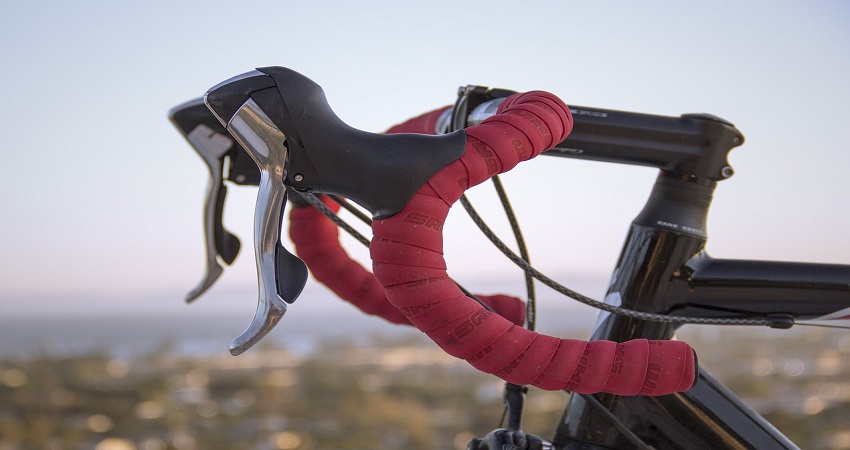Road bikes have curved handlebars to provide a more aerodynamic riding position and improve maneuverability while reducing strain on the wrists and shoulders. This design allows riders to maintain a forward-leaning posture, reducing wind resistance and enhancing performance.
Curved handlebars also offer multiple hand positions, enabling riders to vary their grip and alleviate fatigue during long rides. Additionally, they provide better control and responsiveness, especially while navigating sharp turns or descents. Embracing this design, road bikers can optimize their riding experience, achieve higher speeds, and enjoy greater comfort on extended journeys.
So, the curved handlebars of road bikes serve a crucial purpose in enhancing performance and ensuring a comfortable riding experience.
Benefits Of Curved Handlebars
Curved handlebars are a common feature on road bikes, and for good reason. They offer several benefits that contribute to an overall improved cycling experience. In this section, we will explore the key advantages of using curved handlebars on road bikes.
Improved Aerodynamics
Curved handlebars, also known as drop handlebars, provide road bike riders with a more aerodynamic riding position. The curved shape allows riders to tuck their bodies lower, reducing drag and increasing speed. When compared to flat handlebars, which often create drag due to their wide profile, curved handlebars significantly enhance the bike’s aerodynamic performance. This improvement in aerodynamics naturally leads to faster and more efficient cycling.
Enhanced Control And Stability
Another key benefit of curved handlebars on road bikes is the enhanced control and stability they provide. The curved shape allows riders to have multiple hand positions, enabling them to easily adapt to changing terrain and ride with more confidence. Whether riding on a straight road, climbing a steep hill, or descending at high speeds, the multiple hand positions offered by curved handlebars ensure a comfortable grip, better bike maneuverability, and improved control.
| Curved Handlebars | Flat Handlebars |
|---|---|
| More aerodynamic | Less aerodynamic |
| Better control and stability | Limited hand positions |
| Multiple hand positions | Single hand position |
| Improved bike maneuverability | Less maneuverable |
When it comes to road biking, having optimal control and stability is crucial, especially at high speeds or during challenging riding conditions. Curved handlebars allow riders to maintain a firm grip, absorb shocks, and navigate corners with ease, resulting in a more stable and enjoyable riding experience.
Fitting Considerations
Road bikes are designed to provide cyclists with an optimal riding experience, and one crucial aspect to consider is the fit. When it comes to road bike handlebars, the curved shape is not just for aesthetics, but it also plays a significant role in enhancing ergonomics and comfort. Additionally, the curved handlebars offer customization options, allowing riders to find the perfect fit for their individual preferences and body measurements.
Ergonomics And Comfort
The ergonomics of road bike handlebars are carefully designed to provide riders with a comfortable and efficient riding position. The curved shape of the handlebars allows for multiple hand positions, enabling cyclists to adjust their grip according to the terrain, riding style, and personal comfort level. This versatility in hand placement helps to alleviate fatigue and distribute pressure more evenly, improving overall comfort during long rides.
Road bike handlebars with a curved shape also promote better control and stability. The ergonomic design encourages a natural bend in the wrists, reducing strain and allowing for a more relaxed grip on the handlebars. This position helps to minimize the risk of wrist and hand discomfort or pain, particularly during extended periods of riding.
Customization Options
The curvature of road bike handlebars is not a one-size-fits-all affair. Manufacturers offer various handlebar shapes, known as “drops,” to accommodate different body proportions, riding styles, and personal preferences. Cyclists can choose among shallow, mid-range, or deep drop handlebars, depending on their riding needs.
Shallow drop handlebars provide a more upright riding position, offering extra comfort and control for riders who prefer a more relaxed riding stance. Mid-range and deep drop handlebars offer a more aerodynamic position, allowing riders to minimize wind resistance and increase speed. These handlebars are often favored by competitive cyclists who prioritize performance.
In addition, road bike handlebars can be further customized by adjusting the width and angle. A proper handlebar width ensures optimal control and stability while also preventing shoulder and wrist discomfort. The angle can be adjusted to fine-tune the riding position and cater to individual preferences, ensuring a personalized and comfortable fit.
When it comes to road bike handlebars, the curved design not only enhances ergonomics and comfort but also offers customization options. By selecting the right handlebar shape, width, and angle, cyclists can optimize their riding position, reduce fatigue, and enjoy a more enjoyable and efficient cycling experience.
Types Of Curved Handlebars
Curved handlebars are a defining feature of road bikes, providing cyclists with multiple hand positions for comfort and control during long rides. They come in various shapes and styles, each offering unique benefits and advantages. In this article, we will discuss the different types of curved handlebars commonly found on road bikes: Drop Bars and Aero Bars.
Drop Bars
Drop bars are the most common type of curved handlebars used on road bikes. They feature a distinct downward curve that allows cyclists to position their hands in multiple locations, depending on their riding preferences and needs. With drop bars, riders can choose between three primary hand positions:
- Hoods: Positioned on the top of the handlebars, the hoods provide a relaxed and comfortable grip. This position is ideal for long rides, as it helps reduce strain on the wrists and offers better control.
- Drops: Located at the lowest part of the curve, the drops provide a more aerodynamic position. Cyclists can tuck their bodies in, reducing wind resistance and increasing speed. This position is commonly used when cycling on flat roads or during sprints.
- Tops: Located on the flat part of the handlebars, the tops offer a more upright and relaxed position. This position is suitable for climbing steep hills or during casual rides.
Aero Bars
Aero bars, also known as triathlon or time trial bars, are a specialized type of handlebars primarily used by competitive cyclists and triathletes. Unlike drop bars, aero bars are designed to maximize aerodynamics by allowing riders to maintain a more streamlined position. Aero bars are typically attached to the center of the handlebars and extend outward, providing a horizontal armrest for the cyclist.
These handlebars offer several benefits, particularly for long-distance cycling and time trials:
- Improved aerodynamics: The streamlined position achieved with aero bars reduces drag and wind resistance, allowing cyclists to achieve higher speeds with less effort. This is especially crucial during time trials and races.
- Reduced muscle fatigue: By resting the forearms on the armrests, the weight is evenly distributed, relieving strain on the wrists, shoulders, and upper body. This helps to reduce overall muscle fatigue during long rides.
- Enhanced focus and stability: The position offered by aero bars allows cyclists to maintain a stable center of gravity, enhancing their balance and control over the bike. This is particularly advantageous when riding at high speeds or on uneven surfaces.
In conclusion, the types of curved handlebars commonly found on road bikes, including drop bars and aero bars, offer cyclists a range of hand positions and aerodynamic advantages. Whether you prefer the versatility of drop bars or the speed and aerodynamics of aero bars, these handlebars play a crucial role in enhancing your riding experience on the open road.
Comparing Curved And Straight Handlebars
Road bikes have curved handlebars to improve aerodynamics and provide better control. The curved design allows cyclists to adopt a more streamlined position, reducing wind resistance. Additionally, the shape offers multiple hand positions, reducing fatigue and increasing comfort during long rides.
Different Riding Positions
When it comes to road bikes, the handlebars play a key role in determining the rider’s position and comfort. Comparing curved and straight handlebars, one of the major differences lies in the riding positions they offer.
Curved Handlebars: Also known as drop bars, curved handlebars are the traditional choice for road bikes. They feature a curved shape that extends downward and away from the rider. This design allows for a variety of hand positions, enabling riders to adjust their grip based on their riding style and terrain.
Straight Handlebars: On the other hand, straight handlebars offer a more upright riding position. This type of handlebar is commonly seen on hybrid or mountain bikes. The straight shape provides better control and stability, making it a popular choice for off-road riding and commuting.
Impact On Performance
The choice between curved and straight handlebars can significantly impact a rider’s performance on the road. Let’s take a closer look at the effects of each option:
| Curved Handlebars | Straight Handlebars |
|---|---|
|
|
Ultimately, the choice between curved and straight handlebars depends on an individual’s riding style, preferences, and goals. If speed and aerodynamics are paramount, curved handlebars are the way to go. On the other hand, those seeking a more relaxed and versatile riding experience may find straight handlebars more suitable.
Choosing The Right Handlebars For Your Needs
When it comes to road biking, one crucial decision you’ll need to make is choosing the right handlebars. The handlebars play a significant role in your overall biking experience, affecting comfort, control, and performance. Understanding why road bikes have curved handlebars and how to choose the right type for your needs can make a world of difference in your ride.
Rider’s Experience And Skill Level
One of the determining factors when selecting handlebars for your road bike is your experience and skill level. Novice riders may prefer handlebars that provide a more upright riding position, allowing for better control and stability. In contrast, experienced riders who are used to aggressive riding may opt for handlebars that offer a more aerodynamic position, promoting speed and efficiency.
Type Of Cycling
The type of cycling you plan to do also influences your handlebar choice. Different handlebar styles cater to specific cycling disciplines, each offering distinct advantages. Some popular handlebar styles include:
| Handlebar Style | Best Suited For |
|---|---|
| Dropped Handlebars | Road racing and long-distance riding |
| Flat Handlebars | Urban commuting and leisurely rides |
| Aero Handlebars | Time trial and triathlon events |
Choose the handlebar style that aligns with your cycling goals, ensuring optimal performance and comfort for your specific activities.
Frequently Asked Questions Of Why Do Road Bikes Have Curved Handlebars?
Why Do Road Bikes Have Curved Handlebars?
Road bikes have curved handlebars, also known as drop bars, to provide multiple hand positions for different riding positions. The curved shape allows cyclists to assume an aerodynamic position, reducing wind resistance and increasing speed. The different hand positions also help distribute weight evenly, reducing strain on the wrists and arms during long rides.
Are Curved Handlebars Better For Road Bikes?
Yes, curved handlebars are better for road bikes. The drop bar design offers multiple hand positions, allowing cyclists to adjust their grip for various riding conditions and terrains. This versatility provides better control, improved comfort, and enhanced aerodynamics, making curved handlebars the preferred choice for road biking enthusiasts.
Can I Use Straight Handlebars On A Road Bike?
While it is possible to use straight handlebars on a road bike, it is not recommended. Straight handlebars, such as those found on mountain bikes, do not offer the same level of versatility, comfort, and aerodynamics as curved handlebars. Road bikes are designed specifically for drop bar handlebars to optimize performance and efficiency on paved roads.
Conclusion
Curved handlebars are an essential feature of road bikes for several reasons. They provide better control, allow for a more aerodynamic riding position, and help to reduce strain on the wrists and hands. By distributing the rider’s weight more evenly, curved handlebars enhance overall comfort and endurance, making them a popular choice among road cyclists.



